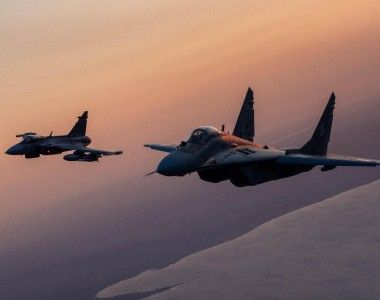Polish Ministry of Defence: Gepard Programme Comes to an Abrupt End

We are cancelling the Gepard Programme, as we are going to focus on a new generation main battle tank - as it was announced by the Undersecretary of State at the Polish MoD, Tomasz Szatkowski. According to the Szatkowski’s statement, modernization of the armoured component of the Polish Armed Forces, is to be based on the programme, the objective of which would be to develop a new type of a main battle tank.
Undersecretary of State at the Polish Ministry of Defence, Tomasz Szatkowski, within his interview for the Polish Press Agency, stated that the Polish authorities are resigning from pursuing the Gepard Close Support Vehicle programme. Szatkowski declared that modernization of the armoured units is to, in a longer run, be founded around a programme, the goal of which would be to develop a new main battle tank. Deputy Minister Szatkowski declared that resignation from development of the Close Support Vehicle is tied to the difficulties pertaining to the requirements that form a foundation for the aforesaid programme.
Let us recall the fact that Gepard, initially developed on the basis of an agreement signed back in 2013 (by the National Centre for Research and Development, with a consortium led by OBRUM Gliwice), was to become a close support vehicle weighing around 35 tonnes, armed with a 120 mm cannon (offering a firepower equivalent to the one ascribable to the main battle tanks). The weight-related requirements were defined at the aforesaid level due to the will to obtain a high level of mobility of the vehicle, higher than the one seen in case of the contemporary main battle tanks, often weighing 50-60 tonnes and more. This had to have an impact on the level of passive protection of the vehicle, provided by the main armour.
Last year, the requirements of the Gepard programme were redefined. Adam Duda, head of the Armament Inspectorate at the time, stated the following in his interview for Defence24.pl: “Gepard platform is, for sure, undergoing changes. I am not sure about the direction of those changes, however the analysis carried out so far shows that 35 tonnes, with 2 tonnes of modernization reserve for the Close Support Vehicle, with determined survivability solutions and cannon, is not a variant which may be realistically implemented.”
The agreement concerning the implementation of the Gepard programme was signed in the late 2013, before the Ukrainian crisis. One of the basic assumptions of the aforesaid project was to create a platform, the mobility of which would be greater, when compared to the existing main battle tanks (at a lower cost), with weaker protection provided by the armour. Such solution could potentially contribute to expansion of the vehicle abilities for being used as a deployment asset. Moreover, Gepard was to be fitted with an active vehicle protection system.
Following the end of the Cold War, it was often assumed that the existing III Generation Main Battle Tanks (Leopard 2, M1A2 Abrams), would still be operated for a long period of time, while development works, at least in the West, were focused on diminishing the vehicle weight and expanding their capability to be involved in expeditionary operations (c.f. the US FCS programme). Some experts disregarded the new main battle tank designs of Russian origin, as these, even though having their roots back in the times of the USSR, were facing numerous delays and cost-related issues. Meanwhile, the existing Russian or Chinese tanks – T-90A or Type 99 – were rather an evolutionary expansion of the existing platforms, and acting against them did not require the West to develop new hardware and countermeasures.
After the Ukrainian crisis broke out, the Germans have decided to create a new generation tank which is to replace the Leopard 2 vehicle in 2030. The Russians have also presented a prototype of the T-14 Armata platform, almost entirely different from the existing counterparts. The new armament and innovative design offer a potential to obtain an advantage over the developed III generation systems, which has been already duly noted by most of the opinion-makers. Obviously, the plans to create a new German-French main battle tank had been existing earlier. However, the practical implementation thereof was highly questionable, both for budgetary reasons, as well as due to the drive towards the deployment applications.
Cancelling Gepard, in order to pursue a new main battle tank programme constitutes a proof that Poland is inclined to orient itself towards defending its own or NATO treaty-defined territories. MBT-class platforms – Leopard 2, and its successor, T-90 or T-14 are all heavier, but they also feature heavier armour. The price that needs to be paid for this is seen in difficulties related to long distance transport. The Ministry, it seems, has decided to go back to the idea of a conventional main battle tank.



